Tired of worrying if your fence gate is securely locked? Whether you have a small garden or are securing a large property with livestock, it’s essential to ensure that your fence gate is locked properly. Keeping out intruders and animals alike, a strongly secured fence gate can be significant in giving you peace of mind.
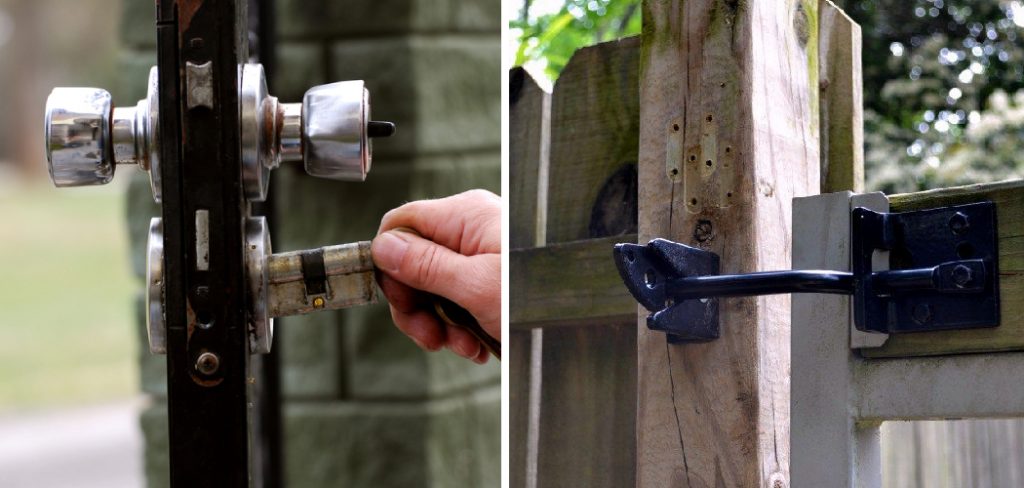
In this blog post on how to lock fence gate, we’ll discuss the security benefits of having a properly locked fence gate as well as walk through how to make sure yours is secure each time you close it up. So don’t waste any more time worrying about whether everything looks safe – read on for some useful tips on maximizing your gate’s security!
Necessary Materials
Given below are the materials that you will need to lock the fence gate successfully:
Padlock:
A padlock is necessary to lock your fence gate securely. Be sure to purchase one of an appropriate size, strength and security rating.
Hasp Latch:
This device can be installed at the top or bottom side of the gate for extra safety. It must have a hole in its center or have a locking system to fit the padlock through.
Lag Screws:
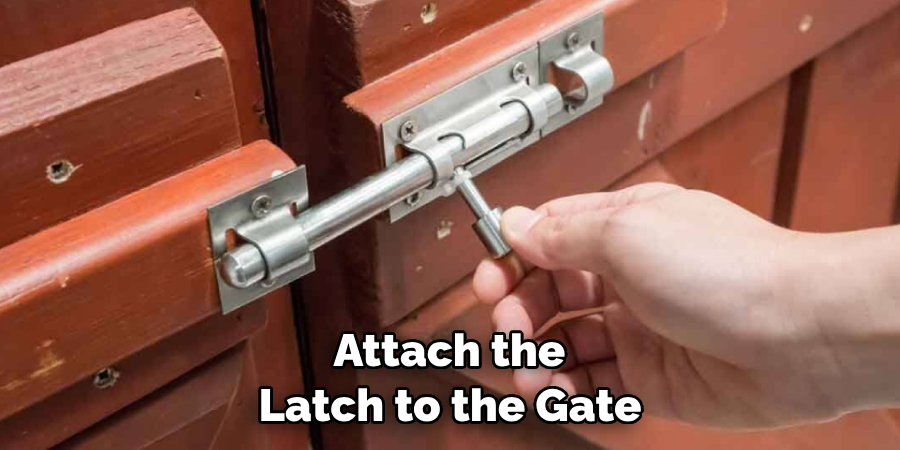
For extra strength and security, lag screws can be used to attach the latch to the gate. They should only be used if you are sure that your fence has enough structural integrity for them.
Drill and Bits:
To properly secure the padlock, a drill is necessary to make holes in the gate where you can fit the hasp latch. Along with the drill, make sure that you also have bits of appropriate size for your specific type of gate material.
10 Simple Step-by-step Guides on How to Lock Fence Gate
Step 1: Determine the Size and Strength of Your Padlock
Make sure it is strong enough to keep animals and intruders out. The size and strength of the padlock will depend on what type of fence you have, as well as the overall security needs that must be met. If in doubt, consult a professional locksmith. However, when in doubt, it is generally better to select the strongest padlock available.
Step 2: Place the Padlock in the Appropriate Spot
It should be placed at least 6 to 8 inches from the edge of the gate so it’s difficult for anyone to reach in. You may also need to consider the height of the gate and how easy it is to reach the padlock from outside. This will determine the optimal spot for it. If necessary, use a longer padlock in order to accommodate the size of your gate.
Step 3: Fit the Hasp Latch Through the Padlock
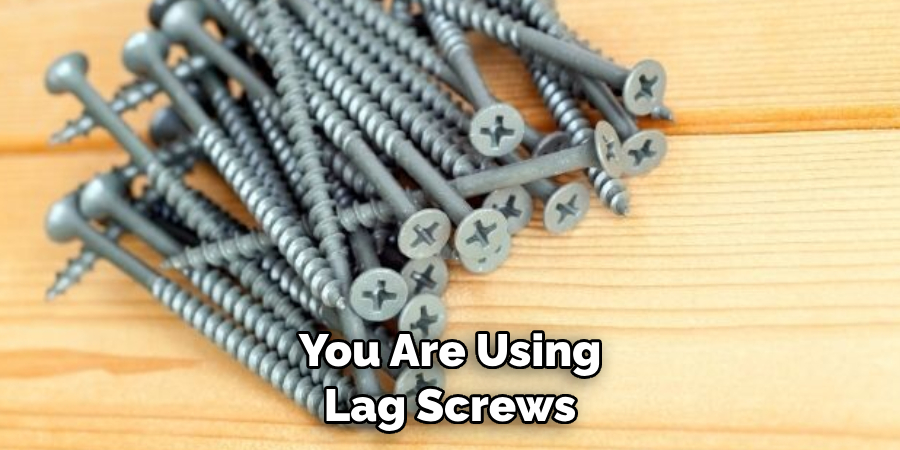
Make sure that it’s firmly secured to the gate and padlock. If you are using lag screws, make sure to use a drill bit that is slightly wider than the screw itself. It should also be deep enough to fit the screw head securely. It’s best to have someone else help you with this step. This will make it easier to get the best results.
Step 4: Securely Attach the Hasp Latch
This can be done with the use of screws or bolts. Make sure to check that the latch is sturdy and secure before moving on to the next step. Otherwise, the padlock may not fit properly or it may become loose over time. It’s important to use the right tools and screws for this task. But if you’re not sure, get a professional locksmith to help you. It’s better to be safe than sorry in this situation.
Step 5: Put on the Padlock
Make sure to lock it securely so that no one can open it without a key. If you are using a combination lock, make sure to set it so that you remember the combination. This way, you won’t have to worry about carrying around an extra key. It’s also important to check that the padlock is firmly in place. If it feels loose, use a longer padlock or lag screws for extra security.
Step 6: Check That the Latch Is Secure
Pull and push on it to make sure everything is tight and secure. If the latch does not move or feels loose, readjust it as needed. But if it still feels loose, you may need to use more lag screws or replace the latch altogether. This is why it’s important to use the right materials and tools for this job. It will ensure that everything is securely locked.
Step 7: Make Sure the Lock Can’t be Reached
There should not be any objects or ledges nearby that can easily reach the lock. This is essential in ensuring the security of your fence gate. You may need to add some additional security features such as a secondary hasp or extra locks. This way, the lock is out of reach and harder to tamper with.
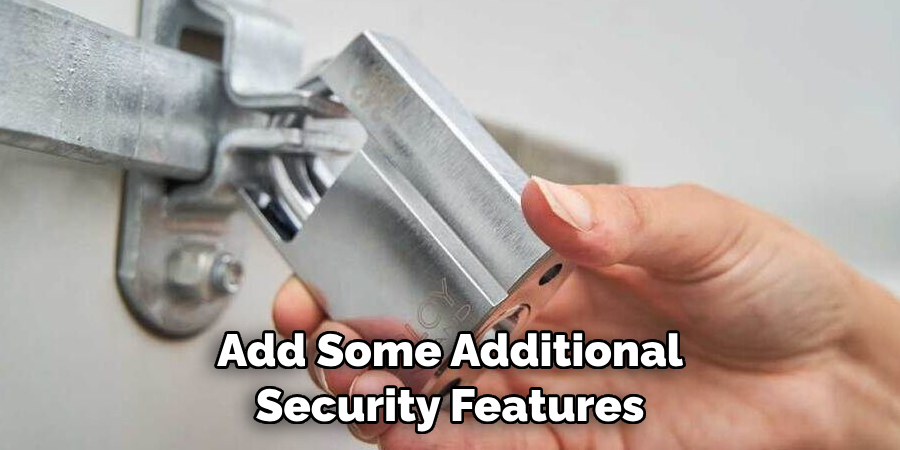
However, you should always make sure that the lock is easy to reach for you in order to open and close it.
Step 8: Check the Structure of Your Fence Gate
If you are using lag screws, make sure to check that your gate has enough structural integrity for them. If needed, add additional support or reinforcement to ensure that it is strong and secure. You may also need to repair or replace any weak or damaged parts of the gate. It’s best to get a professional locksmith to help with this task if you are not sure what to do.
Step 9: Make Sure Your Fence Gate Is Aligned Properly
Your fence should be aligned properly so that the latch and padlock are securely attached. If your gate is misaligned, make sure to adjust it as needed before adding a padlock. But if you are unsure about how to do this, it’s best to consult a professional locksmith. It’s essential that your fence gate is properly aligned in order to ensure maximum security. It also helps to reduce noise and general wear and tear. But if you are ever in doubt, don’t hesitate to contact a locksmith for assistance.
Step 10: Test the Gate Security
Make sure to test it by pushing and pulling on both sides of the gate. If everything is tight and secure, you know your fence gate is locked properly. It’s important to check the padlock and latch at least once a month. This will ensure that everything is in good working order. You may also want to add additional locks or security features if needed. Always remember to keep your fence gate locked whenever it’s not in use. This will help protect against intruders and animals that may try to break into your property.
Following these steps on how to lock fence gate will help ensure that your fence gate remains securely locked at all times! It’s also a good idea to inspect your gate regularly to ensure that everything is still in working order.
Frequently Asked Questions
Q1: What Type of Padlock Should I Use for My Fence Gate?
A1: The type of padlock you should use depends on the size and strength of your gate. Make sure to purchase one that is strong enough to keep out intruders and animals.
Q2: How Often Should I Check My Gate?
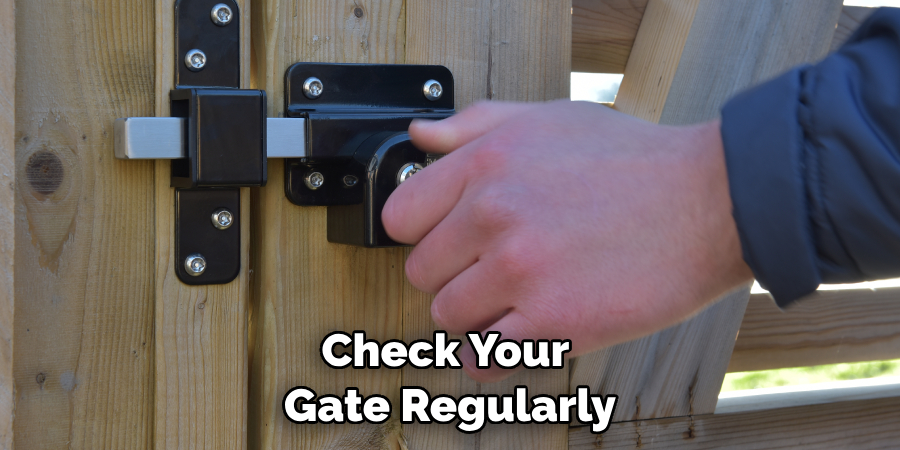
A2: Check your gate regularly to ensure that it is securely locked and that all the components are in working order. This will help you identify any potential issues before they become major problems.
Q3: What Should I Do if My Gate Locks Are Damaged?
A3: If your locking components are damaged, you should replace them as soon as possible. Make sure to use strong and secure materials that meet the necessary security needs for your fence gate.
Q4: How Can I Make My Fence Gate More Secure?
A4: In addition to locking your fence gate, you can further increase its security by adding additional support and reinforcement. This could include installing a taller fence or adding a hasp latch at the top of the gate. Other options include using motion sensor lights or other surveillance equipment.
Conclusion
To ensure that your gate is securely latched and remains so, it’s important to be mindful of a few key steps on how to lock fence gate and follow the recommended maintenance tips. From regularly lubricating hinges with an approved lubricant to making sure all screws are tightly fastened, these small steps can help protect against potential trespassers and other intrusions.
Additionally, investing in the proper tools and supplies will also go a long way when it comes to upkeep. As we come up in the summer months, now is the perfect time to review your current gate setup and make any necessary changes or adjustments.
Taking a few minutes out of your day now can save you big headaches later down the road! So don’t put off your gate upkeep any longer – start doing what you need to do today for peace of mind tomorrow.
About
Safety Fic is a distinguished figure in the world of Diy design, with a decade of expertise creating innovative and sustainable Diy solutions. His professional focus lies in merging traditional craftsmanship with modern manufacturing techniques, fostering designs that are both practical and environmentally conscious. As the author of diy, Safety Fic delves into the art and science of Safety Fic-making, inspiring artisans and industry professionals alike.
Education RMIT University
(Melbourne, Australia) Associate Degree in Design (Safety Fic) Focus on sustainable design, industry-driven projects, and practical craftsmanship. Gained hands-on experience with traditional and digital manufacturing tools, such as CAD and CNC software.
Nottingham Trent University
(United Kingdom) Bachelor’s in diyfastly.com and Product Design (Honors) Specialized in product design with a focus on blending creativity with production techniques. Participated in industry projects, working with companies like John Lewis and Vitsoe to gain real-world insights.
Publications and Impact
In diy, Safety Fic his insights on indoor design processes, materials, and strategies for efficient production. His writing bridges the gap between artisan knowledge and modern industry needs, making it a must-read for both budding designers and seasoned professionals.
